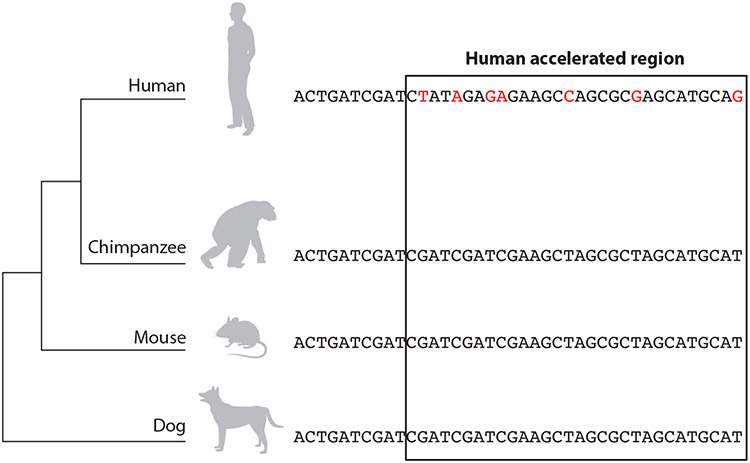Figure 1.
Human accelerated regions have acquired many nucleotide substitutions (red) in the human genome since their divergence from the common ancestor with chimpanzees, but they are highly conserved in other vertebrates. This sequence signature suggests a constrained function during vertebrate evolution that was lost or changed in humans.

